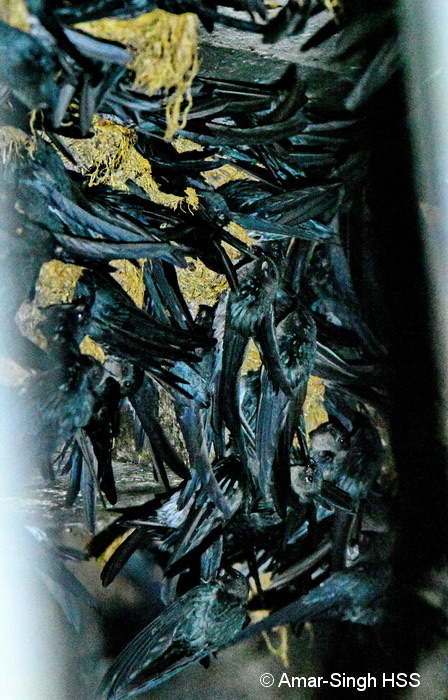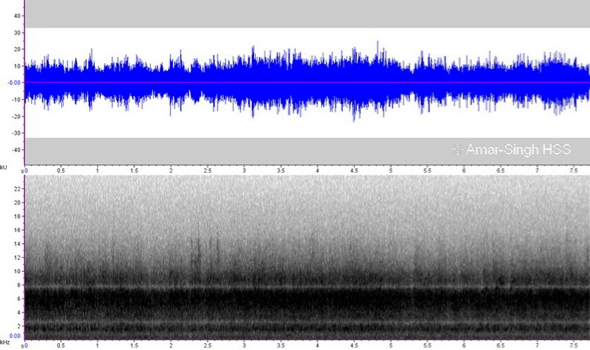“The Plume-toed Swiftlet (Collocalia affinis) has been split from the Glossy Swiftlet (C. esculenta) by a number of authorities including:
1. Rheindt, Christidis, Norman, et al (2017). Speciation in Indo-Pacific swiftlets (Aves: Apodidae): integrating molecular and phenotypic data for a new provisional taxonomy of the Collocalia esculenta complex. Zootaxa. 4250 (5): 401–433. Available HERE.
2. Clements Checklist of the Birds of the World 2018
3. International Ornithologists’ Union (IOC) World Bird List, Updated 25th June 2018, version 8.2. Available HERE.
“But OBI, HBW Alive 2018 (online edition) and The Howard & Moore Complete Checklist of the Birds of the World 4th Edition retains it under the Glossy Swiftlet as a subspecies. They are called “Plume-toed” Swiftlet as there is a tuft of small feathers on the hallux (rear facing toe).
“I saw a roosting site for these swifts at this hill station. Information from my host suggests the roosting site has been in used for both nesting and roosting for many decades (currently not nesting). There are approximately 300 Plume-toed Swiftlets using a garage to roost every night (above). They come in around 7pm (dusk) like a swarm of bats (below) and leave at dawn (approximately 6 to 6.30am).
“They will roost by clinging on to old nests (below)…
“…to the bare ceiling (rough stone surface, below), and even to other birds.
“While flying in to roost, when initially roosting and when getting ready to leave in the morning they will all call out collectively, in a loud din that is deafening. An audio recording with waveform and sonogram are given below.
Note: Images were taken with the aid of a torch light and we tried to limit our disturbance. They can be affected by prolonged light disturbance at night.
Dato’ Dr Amar-Singh HSS
Ipoh, Perak, Malaysia
19-20th November 2018
Location: Fraser’s Hill, Pahang, Malaysia
Habitat: 1300 m ASL, primary montane jungle













